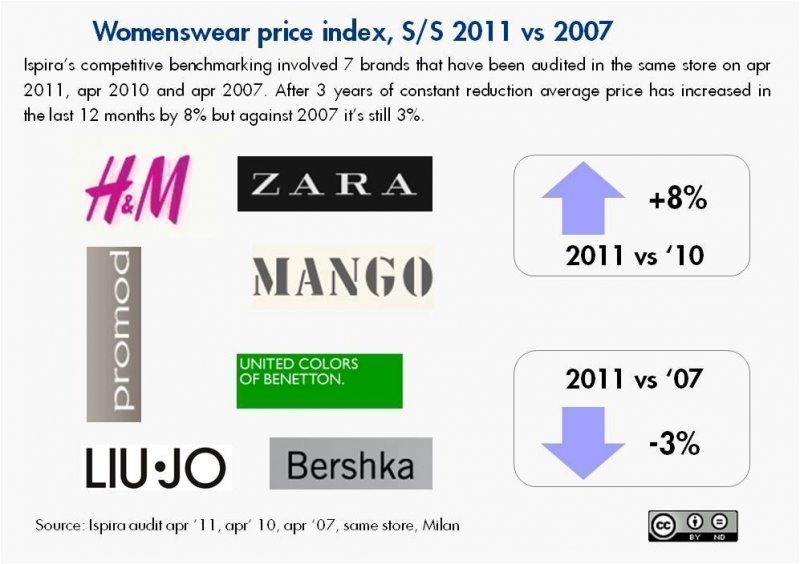
1. price index 2011 vs 2007
Retail Intelligence - 2011 vs 2007 comparison
clothing, apparel, fashion
See 5 charts below : . womenswear price change 2011 vs 2007, . womenswear price change 2011 vs 2010, . womenswear price change by function 2011 vs 2007, . womenswear price index 2011 vs H&M, . womenswear range width 2011 vs 2007
Ispira’s competitive benchmarking involved 7 brands that have been audited in the same store on apr 2011, apr 2010 and apr 2007. After 3 years of constant reduction average price has increased in the last 12 months by 8% but against 2007 it’s still 3%down.
Zara (mostly through TRF label) and H&M show the biggest price decrease in the 4-year period. Benetton and Bershka have limited variations, Liu Jo moderate increase, Mango and Promod Mango the largest increase, 24% and 58% respectively. Overall, the panel shows a price reduction of 3%
Against 2010 H&M shows no price variation against last year, with moderate increase on t-shirts, jackets and dresses; Zara a 5.7% increase mostly on knitwear, trousers and denim.
In the last 4 years price deflation has been measured in all functions with the exception of trousers and jackets. Strong pressure on denim and dresses.
H&M has the lowest price level on all functions with exception of sweatshirts. The other 5 brands are ranked with a Price index ranging from 1.2 for Bershka to 2.3 for Promod. In 2007 Zara was more expensive than Benetton and Mango
Range width has increased 25% in the last 4 years, 4% in the last 12 months. This can be combination of higher display density techniques and slow selling rate. Mango, H&M, Bershka and Benetton have increased their visible range by more than 30%


S/S'12 retail intelligence press release is now available